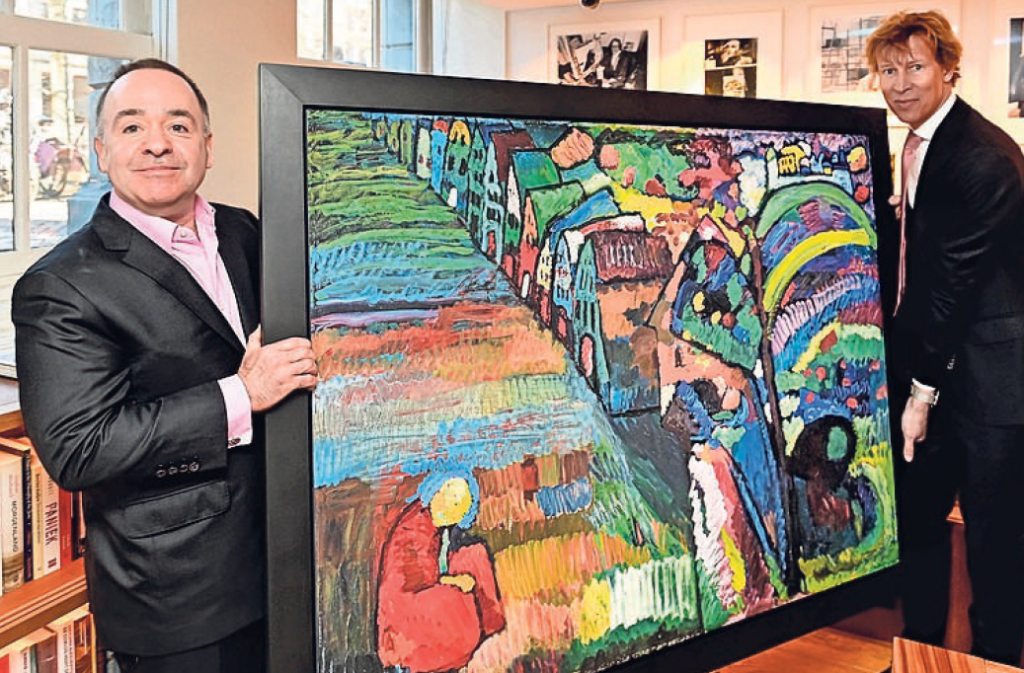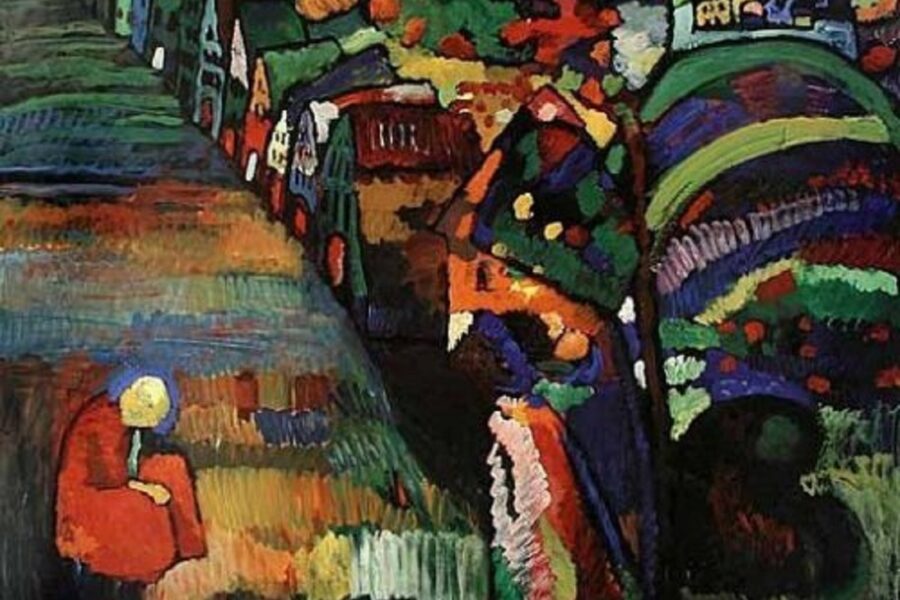AMSTERDAM – The painting Bild mit Häusern by Wassily Kandinsky was returned to the American heirs the former Jewish owners of the canvas in a private ceremony at the Stedelijk Museum Amsterdam Monday morning.
by Paola van de Velde

PHOTO MARCEL ANTONISSE
It was a moving moment for Rob Lewenstein and his sister Francesca. “We had never seen the artwork in real life. The colors are so beautiful and vibrant. We will now discuss with the other Dutch heirs of Irma Klein what to do with the painting.”
Taking the 1909 canvas to auction, where experts say it could fetch at least 20 million euros, is not the first option the heirs think of. “The work is now stored in a safe place. We are considering housing the painting in another museum. Where we don’t know that yet. We’re all going to think about that quietly now. But returning to the Stedelijk is not an option,” says Lewenstein, who, like his sister, absolutely does not want to be photographed recognizably.
Director Rein Wolfs of the Stedelijk Museum saw the colorful work leave with pain in his heart. “This farewell marks an important moment in Dutch restitution policy. At the same time, it is also a farewell with melancholy for the museum, because the painting was such an important link in our historically grown collection, beloved by our visitors,” he said at the ceremony.
Attorney James Palmer of Mondex Corporation, the firm that alerted the Lewenstein family to the Kandinsky nearly 10 years ago and assisted them so doggedly in their long-running battle to return the war art, thinks Wolfs is showing, with this statement, that he is thinking old-fashioned.
“The pain of the museum is not above the desire for justice of the claimants. In my opinion, the Netherlands can actually be proud of its new restitution policy. It sets a good example for other countries to deal fairly with heirs of works of art from Jewish owners. I hope that France and Germany will follow suit.”
Years of struggle preceded the restitution of Bild mit Häusern. The first application for restitution was made as early as 2013. The Restitution Committee, set up by the Dutch government to assess restitution of war art, ruled in 2018 that the municipality of Amsterdam, the official owner of the artwork, did not have to return the precious canvas. According to them, the municipality had purchased the Kandinsky in good faith at an auction in October 1940.
The heirs did not agree with this ‘binding opinion’. They started a lawsuit. “If after May 1940, after the occupation of the Netherlands by the Nazis, a work of art from Jewish owners comes under the hammer, you cannot possibly maintain that the Nazis had no role in this.
Especially when you know that the painting was sold for only 160 guilders. This while Robert Lewenstein, the original owner of this Kandinsky, paid 500 guilders for it in 1923. Then all alarm bells should go off immediately. Then you know that it is not pure coffee,” says Palmer.
The publication of the Kohnstamm Commission in 2020, appointed by the Ministry of Education, Culture and Science to evaluate Dutch restitution policy, marked a turning point in this matter. In the report Striving for Justice, this committee advised, among other things, to establish a new assessment framework. Based on this, the municipality of Amsterdam came to the decision to return the canvas in February 2021.
{This is an English version of the Dutch article “Schilderij Stedelijk terug naar erven” published on De Telegraaf on March 1st 2022.}


